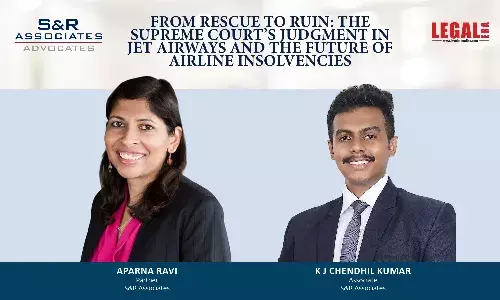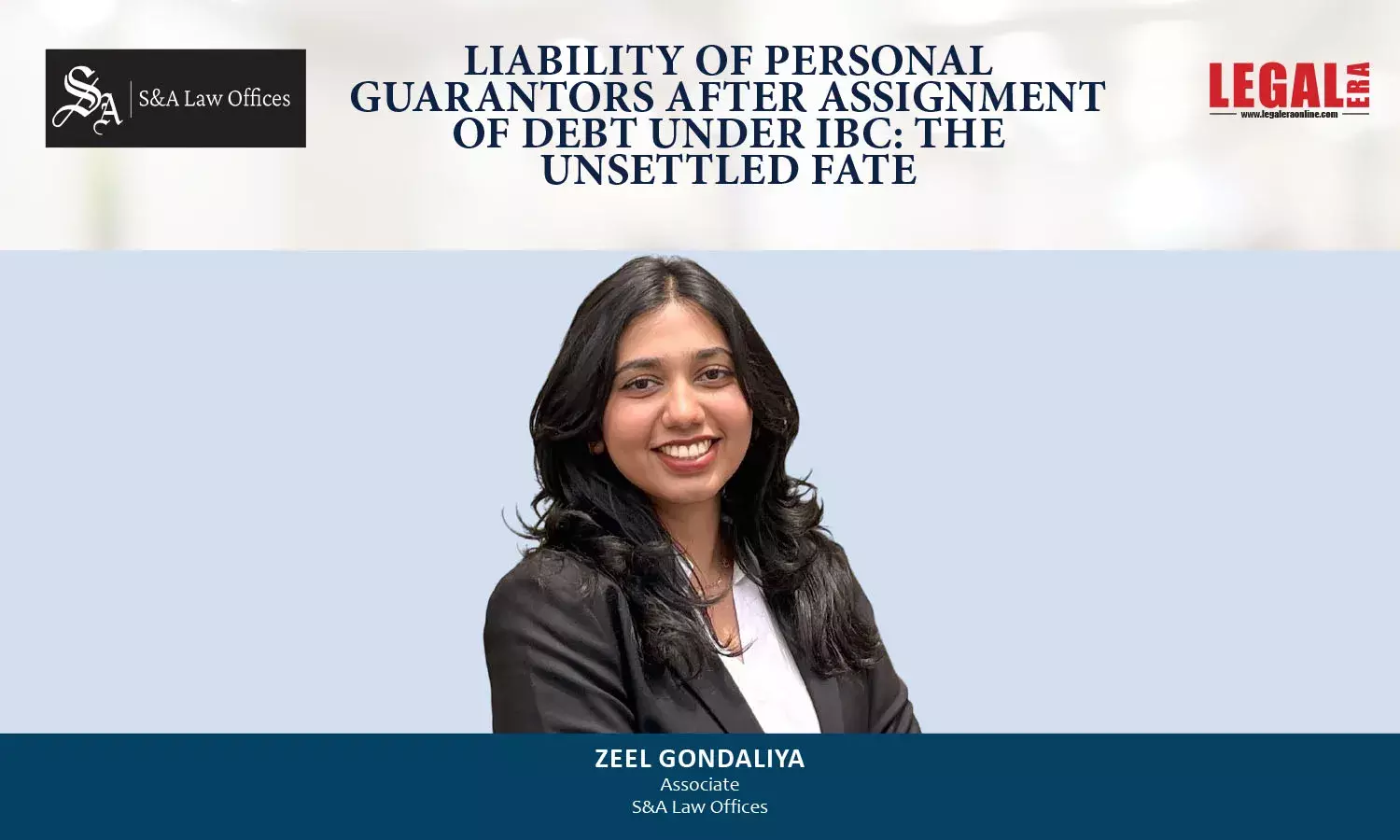Overcoming the conundrum owing to Vidarbha Industries Judgment

Overcoming the conundrum owing to Vidarbha Industries Judgment With the advent of Insolvency and Bankruptcy Code, 2016 (“IBC”/ “Code”), the Financial Creditors and Operational Creditors were empowered to initiate the Corporate Insolvency Resolution Process (“CIRP”) against the Corporate Debtor under Section 7 and Section 9 of IBC respectively. The objective of the Code has been...
Overcoming the conundrum owing to Vidarbha Industries Judgment
With the advent of Insolvency and Bankruptcy Code, 2016 (“IBC”/ “Code”), the Financial Creditors and Operational Creditors were empowered to initiate the Corporate Insolvency Resolution Process (“CIRP”) against the Corporate Debtor under Section 7 and Section 9 of IBC respectively. The objective of the Code has been to reorganise and resolve the insolvency of corporations, individuals, and partnerships in a time-bound manner through a creditor driven process.
At a time when the country was affected with continuous defaults, debts stacking up and the then existing laws failing poorly, the introduction of the Code brought about a much needed change in regime from ‘debtor in control’ to the ‘creditor in control’. The positive impact of IBC is also evident from the fact that India’s rank in resolving insolvency went from 142 in 2014 to 63 in 2022.
Despite a relatively new legislation, the journey of IBC has been smooth and efficient till it was struck with the rather problematic literal interpretation of Section 7 of the IBC by the Supreme Court in the matter of Vidarbha Industries Power Limited v. Axis Bank Limited (reported in 2022 SCC OnLine SC 841) (“Vidarbha Industries Judgment”).
Before shifting the focus on to the facts and outcome in the Vidarbha Industries matter, it is only natural to briefly touch upon the scheme of Section 7 of the IBC. Section 7 empower Financial Creditor to file an application for CIRP against Corporate Debtor. Under the Code, the National Company Law Tribunal (“NCLT”) is required to admit an application seeking initiation of CIRP filed by a Financial Creditor under Section 7, after being satisfied of two conditions viz. the existence of a financial debt and an admission of default of the debt.
However, the judgment of the Hon’ble Supreme Court in the matter of Vidarbha Industries was a noteworthy switch from the long settled and widely understood practise followed by NCLT where the essential ingredients for admitting an application under Section 7 of the IBC were the existence of debt and default. The Supreme Court’s judgment has rendered the aforementioned provision discretionary. The Supreme Court concluded that the existence of debt and default solely bestows upon the Financial Creditor, a right to initiate CIRP and, if ‘reasons’ provided by the Corporate Debtor are justified, the NCLT is vested with the discretion to reject such an Application. The Supreme Court, while arriving at this conclusion, interpreted the term ‘may’ in Section 7(5)(a) of the Code and held that the admission of an application under Section 7 was discretionary rather than mandatory. It observed that the provision employs the phrase 'may admit' which provides discretion to the NCLT admit or reject the Application despite the existence of a default.
On one hand, the judgment has found support among a faction who believes that the judgment provides a much needed additional blanket of defense to the Corporate Debtors i.e. taking into factor the solvency and health of the company before an application for CIRP can be admitted against it. The judgment in a way discourages the admission of frivolous Petitions due to an isolated instance of default of an otherwise solvent company. It has been often noticed that the financial institutions end up filing Petitions seeking initiation of CIRP as a pressure tactic and expects the NCLT to act as recovery agent on its behalf instead of actually examining ways for recovery and revival of an already distressed corporate debtor. The Vidarbha Industries Judgment strikes a balance between the rights and interests of creditor vis a vis rights and interests of borrowers by ensuring that the drastic step of initiation of CIRP against a company should not be made as a matter of routine but there ought to exist certain checks and balances which must be considered beforehand.
On the other hand, the decision of the Supreme Court has come under great scrutiny as it results in shifting of the focus from existence of ‘debt’ and consequent ‘default being the factors for consideration of the NCLT to ‘inability to pay debts’ being an added factor for consideration. This has taken us back to the pre IBC regime when the winding-up of companies was governed by the Companies Act and where “inability to pay debts” was considered a sin qua non for initiation of winding-up. The judgment is also in teeth of Banking Law Reforms Committee recommendations to shift the framework of initiating CIRP to the existence of debt and its non-payment. The judgment of the Supreme Court in the matter of Vidarbha Industries is in dichotomy of the Supreme Court’s earlier decision of Swiss Ribbons Private Limited v. Union of India & Others (reported in (2019) 4 SCC 17) which relying upon another landmark judgment of the Supreme Court in the matter of Innoventive Industries Limited v. ICICI Bank & Another (reported in (2018) 1 SCC 407) held that the NCLT must admit a petition on ascertaining the existence of a debt and default and hence, there was no discretion with the NCLT to reject a petition of a Financial Creditor when admittedly a debt and default is proved.
During the hearing of the review Petition filed by Axis Bank against the Vidarbha Industries Judgment, Supreme Court’s attention was invited to judgment in the matter of E.S. Krishnamurthy & Ors. vs. Bharath Hi-Tech Builders Pvt. Ltd. (reported in (2022) 3 SCC 161) wherein it was held that the NCLT must only see whether there is a debt, default and whether the application filed under Section 7 is complete in all aspects or not. In fact, the Solicitor General in the review proceedings unequivocally stated that certain observations made by Supreme Court in the Vidarbha Industries Judgment could be interpreted in a manner that might be contrary to the aims and objects of the IBC and render the law infructuous. However, the Supreme Court rejected the Review Petition holding that the question of whether Section 7 sub-section (5) was mandatory or discretionary was not in issue in any of the judgments cited on behalf of the Review applicant.
The aftermath that followed with the passing of the Vidarbha Industries Judgment and dismissal of the review Petition was the contrasting judgments and interpretations adopted by the NCLT and NCLAT on whether the NCLT has the discretion to admit or refuse to admit insolvency petitions, despite the Financial Creditor having proved the existence of a debt and a default having occurred on that debt. With an additional layer of defense available to the Corporate Debtor, it would drastically increase the time needed by the NCLT to assess each Application under the Code. Clearly, the same was in divergence with the primary objective of the Code i.e. to reduce delays that had severely impacted the recovery rates for creditors in insolvency proceedings. In other words, the Vidarbha Industries judgment has the effect of adding to the existing uncertainty in a process that is already grappling in several areas.
On account of the significant departure as to what was till now the widely understood and settled position under Section 7 of the Code, the Government has swung in action. The Ministry of Corporate Affairs on 18 January, 2023 released a consultation paper outlining the proposed amendments to the IBC to ensure efficient decision-making in insolvency proceedings. The proposed amendments include an amendment to Section 7 to clarify that while considering an application for initiation of the CIRP by the financial creditors, the NCLT is only required to be satisfied about the occurrence of a default and fulfilment of procedural requirements for this specific purpose (and nothing more). The proposed amendment provides that where a default is established, it is mandatory for the NCLT to admit the application and initiate the CIRP.
Another noteworthy development that will provide much needed clarity to the Financial Creditors is the issuance of the notice by the Supreme Court in the matter of Maganlal Daga HUF and Anr v Jag Mohan Daga and Ors. (Civil Appeal Diary No(s). 38798/2022) In the aforesaid matter, the 3-Judge Bench of the Supreme Court is scheduled to hear a plea that has questioned the correctness of the ruling in the matter of Vidarbha Industries. Submissions have been made to the effect that Vidarbha Industries Judgement is contrary to the settled position in law as laid down in Innoventive Industries Limited v. ICICI Bank and the said judgement has been followed in several decisions of the Supreme Court including in the matter of E S Krishnamurthy v. Bharath Hi-Tech Builders Private Limited. It has been contended that principle which has been enunciated in Vidarbha Industries Judgment is liable to dilute the substratum of the IBC. The Maganlal Daga HUF matter is currently pending hearing before the Hon’ble Supreme Court.
Conclusion:
While the decision in the judgment of Vidarbha Industries has elicited mixed response from various stakeholders, it cannot be denied that the ruling has enabled the NCLT to apply its mind to ‘relevant factors’ in assessing the merits of Petition filed for the initiation of CIRP against the Corporate Debtor thereby resulting in different levels of subjectivity in exercise of NCLT’s jurisdiction. There has been constant reference to the Vidarbha Industries Judgment in various decisions passed by the NCLT/NCLAT. It remains to be seen whether the Supreme Court will reverse the Vidarbha Industries Judgment after considering the aspect of discretion vested with NCLT in admitting Petitions u/s 7 of the Code, however, it appears that the alternate route being amendments in the Code effected by the legislature will result in nullifying the findings of the Vidarbha Industries Judgment which has muddled the water by diverging from the already existing settled principles. Hopefully, the uncertainty created by the decision in Vidarbha Industries Judgment will not last on account of aforesaid developments taking place at legislative and judicial front.






